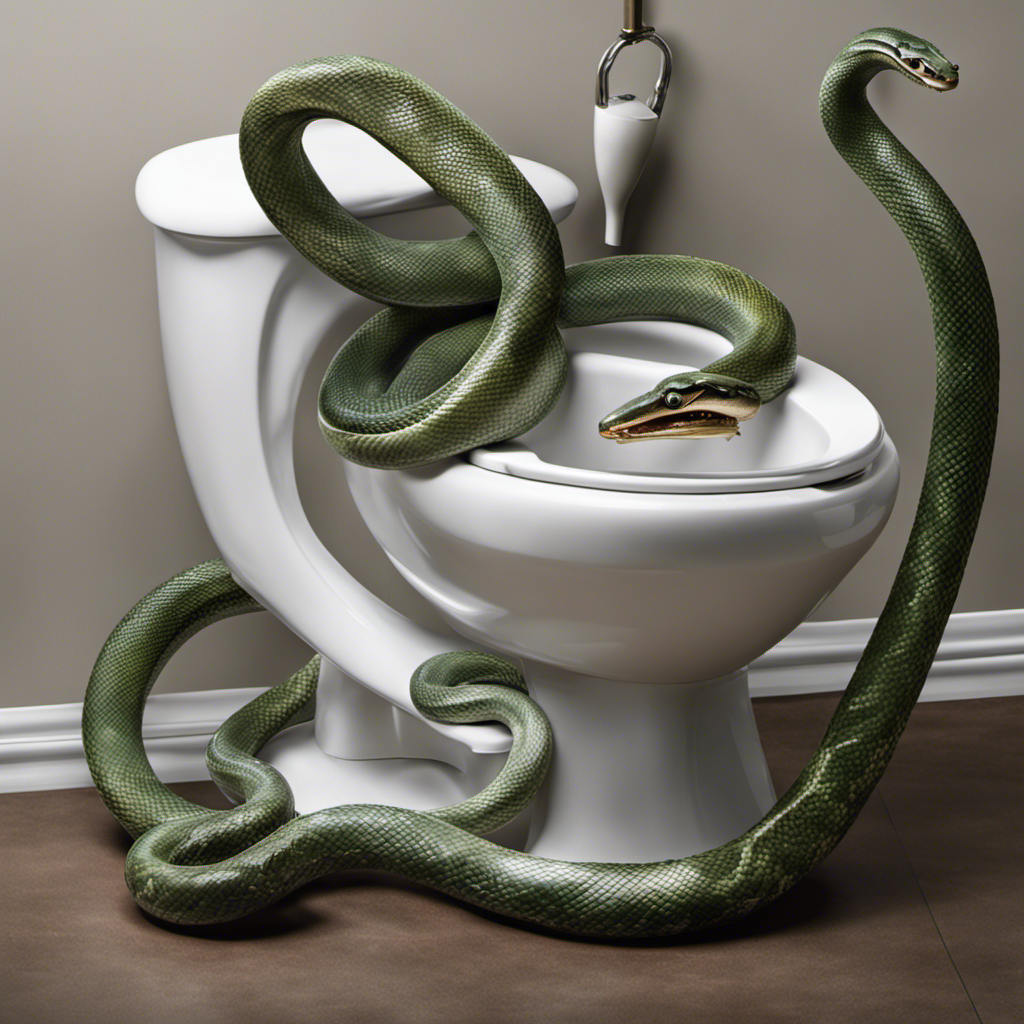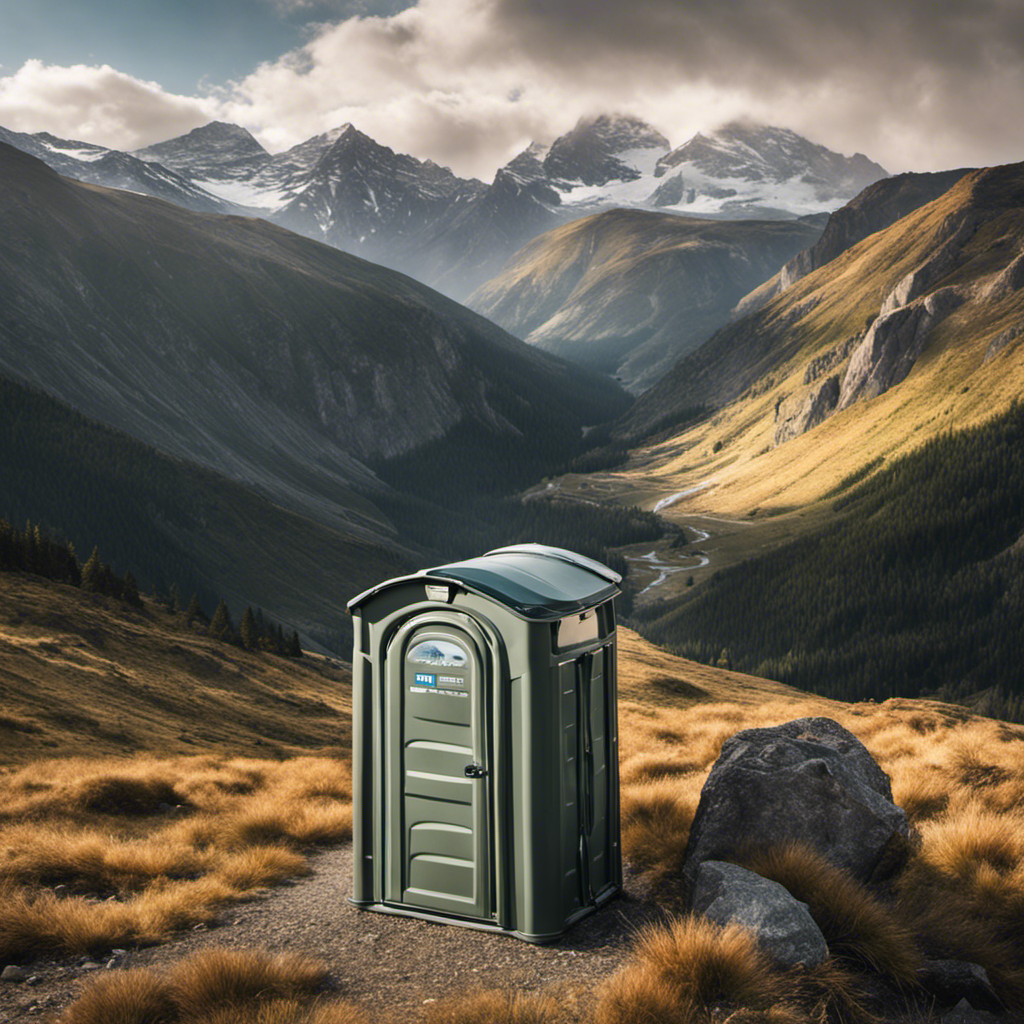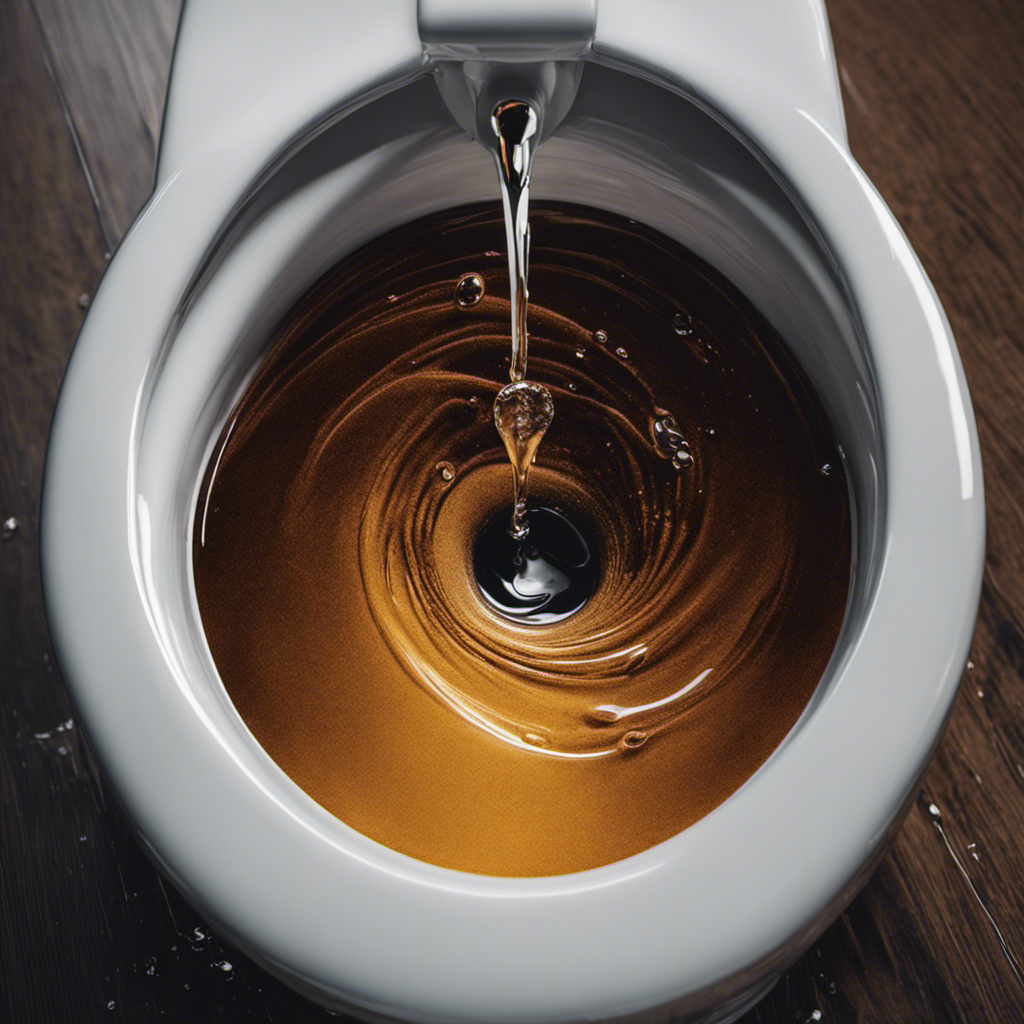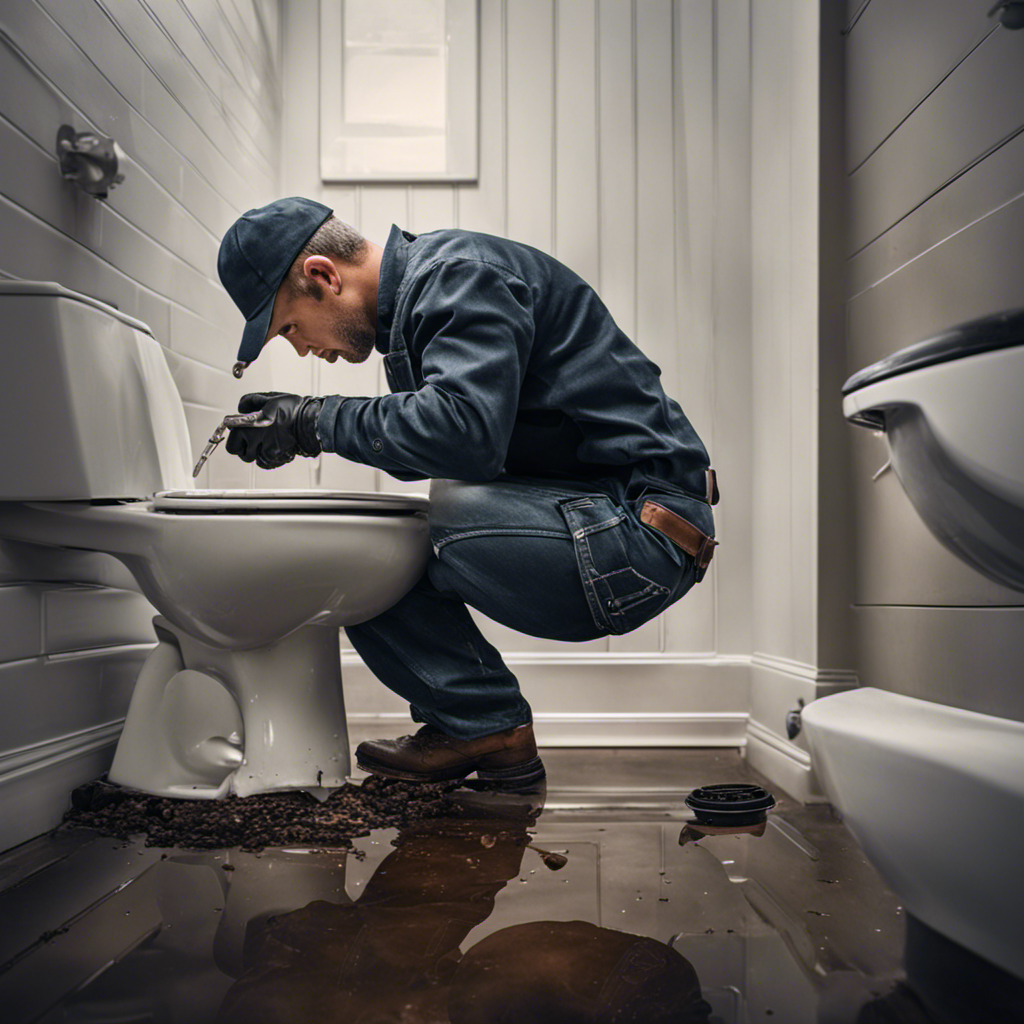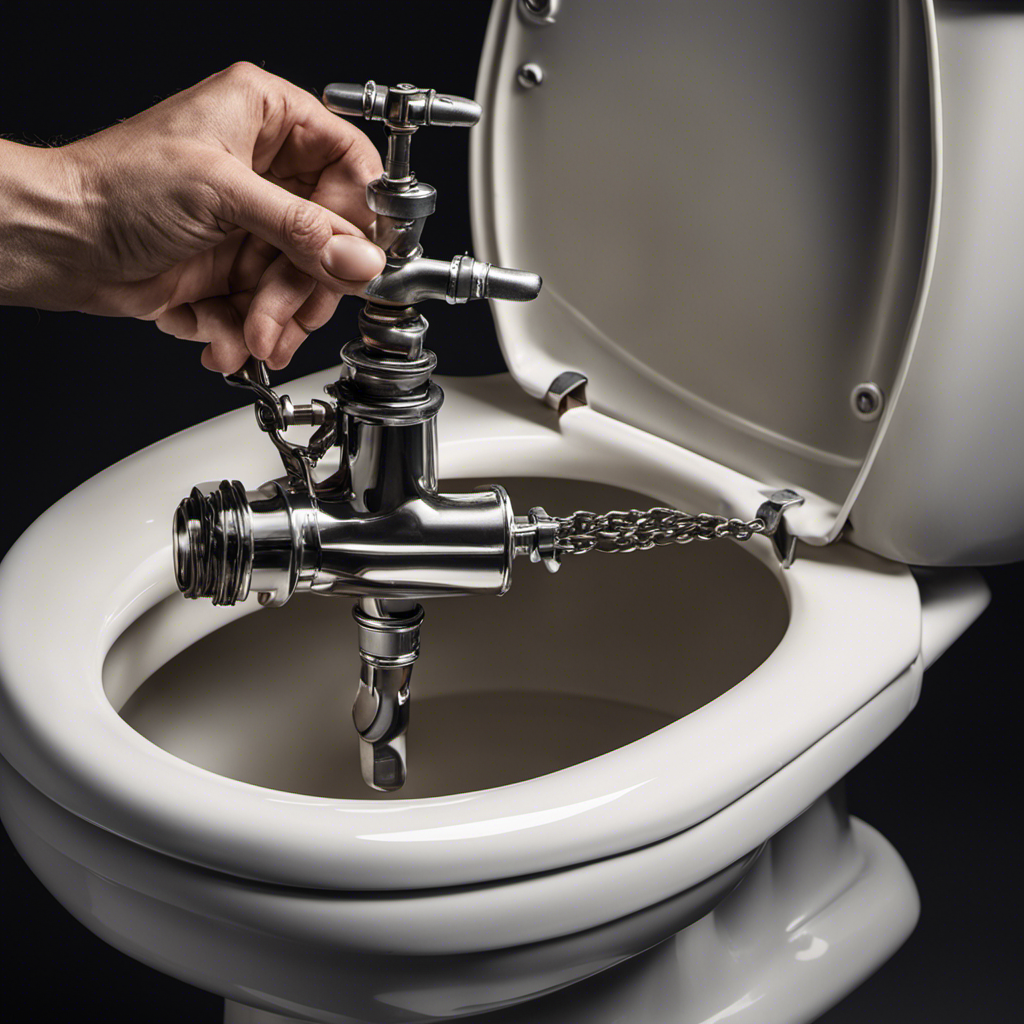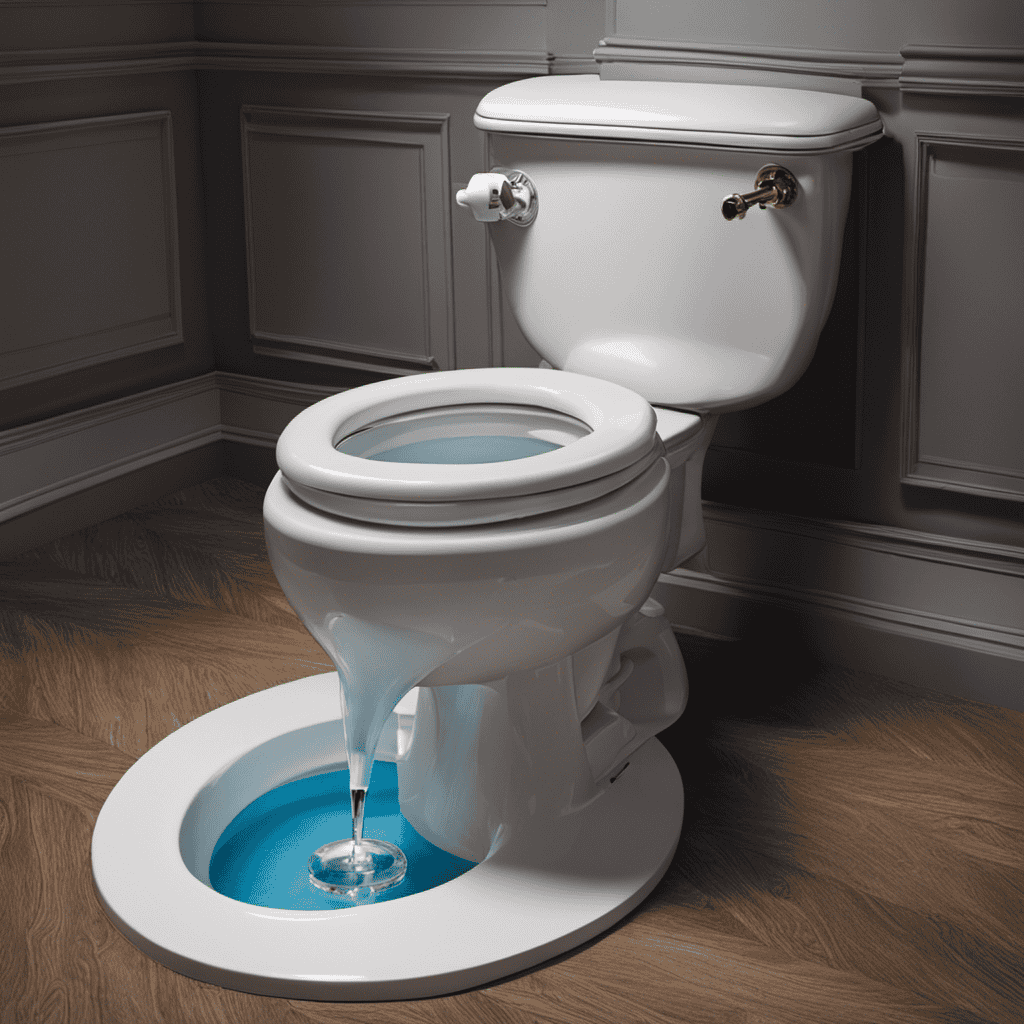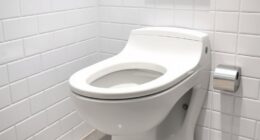Have you ever found yourself in the frustrating predicament of a clogged toilet? Fear not, for I have the perfect solution for you.
In this article, I will guide you through the step-by-step process of using a snake to unclog your toilet. With the right tools and a little know-how, you’ll be able to tackle any clog with ease.
So, grab your snake and let’s dive into the world of toilet unclogging together!
Key Takeaways
- Select the right size snake for the toilet drain diameter.
- Wear gloves and protect yourself from splashes and debris.
- Use the snake with proper technique and control.
- Clean and maintain the snake after use to ensure effectiveness.
Selecting the Right Snake for the Job
When choosing the right snake for the job, it’s important to consider the diameter of the toilet drain. Snake sizes vary, and using the wrong size can lead to further damage.
To determine the right snake size, measure the diameter of the drain opening. For most toilets, a 1/2-inch or 3/8-inch snake should suffice. These sizes are commonly available at hardware stores and are suitable for most clogs.
However, if you have a larger drain or a stubborn clog, you may need a larger snake, such as a 3/4-inch or 1-inch snake.
It’s also worth noting that there are alternative unclogging methods, such as using a plunger or a chemical drain cleaner. However, a snake is often the most effective tool for clearing tough clogs.
Gathering the Necessary Tools and Materials
First, you’ll need to gather all the tools and materials necessary for the task at hand. When it comes to unclogging a toilet, having the right tools is essential. The most common tool used is a toilet snake, also known as a plumbing auger. This long, flexible tool is designed to reach deep into the pipes and break up any clogs.
Additionally, you’ll need a pair of rubber gloves to protect your hands from any dirty water or debris. It’s also a good idea to have a bucket and some old towels on hand, in case of any spills or messes.
As for the clog causes, the most common culprits are excessive toilet paper, flushing non-flushable items, or a buildup of hair and soap scum.
Preparing the Toilet for Snake Use
Before using a snake to unclog a toilet, it is important to take certain safety precautions.
Firstly, make sure to wear gloves to protect your hands from any potential bacteria or waste.
Secondly, always keep your face away from the toilet bowl to avoid any splashing or spray.
Finally, ensure that there is adequate lighting in the bathroom to allow for proper visibility during the process.
When positioning the snake, it is crucial to hold it firmly but not too tightly, allowing it to move freely as you navigate through the pipes.
Additionally, position yourself in a comfortable and stable stance to maintain control and prevent any accidents.
Safety Precautions for Snake
To ensure your safety while using a snake to unclog a toilet, it’s important to follow these precautions.
First and foremost, proper snake handling is crucial. Make sure to wear protective gloves to prevent any potential injuries. When handling the snake, hold it firmly but not too tightly, ensuring that you have a good grip.
It’s important to keep a safe distance from the toilet bowl to avoid any splashes or accidental contact with waste. Additionally, always use the snake in a well-ventilated area to avoid inhaling harmful fumes.
Lastly, make sure to have the necessary safety equipment on hand, such as safety goggles to protect your eyes from any debris that may fly out during the unclogging process.
Proper Positioning for Snake
When positioning your hand on the handle of the snake, make sure to hold it firmly but not too tightly to maintain control. Proper positioning techniques are crucial to effectively use a snake to unclog a toilet.
Start by gripping the handle with your dominant hand, placing your thumb on top for stability. Keep your other hand on the drum to guide the snake smoothly into the drain.
Stand or kneel in a comfortable position, ensuring your body is stable and balanced. Avoid leaning too heavily on the snake or putting excessive pressure on the handle, as this can cause it to bend or break.
Common mistakes include gripping the handle too tightly, which can lead to loss of control or injury, and not aligning your body properly, resulting in poor maneuverability.
Inserting the Snake Into the Toilet Drain
You can easily insert the snake into the toilet drain to unclog it. Proper snake insertion techniques are important to ensure a successful outcome. It is crucial to avoid common mistakes that can worsen the clog or damage the plumbing. Here are some tips for effectively inserting the snake:
| Snake Insertion Techniques | Common Mistakes with Snake Insertion |
|---|---|
| Gradually feed the snake into the drain, applying gentle pressure and rotating it as you go. | Avoid forcing the snake or applying excessive pressure, as this can cause the snake to get stuck or damage the pipes. |
| Maintain a steady and controlled movement, allowing the snake to navigate through the pipe smoothly. | Do not rush or jerk the snake, as this can cause it to become tangled or break. |
| Use caution when reaching bends or curves in the pipe, gently maneuvering the snake through these areas. | Avoid yanking or twisting the snake forcefully, as this can lead to pipe damage or dislodging of the clog. |
Maneuvering the Snake to Break Up the Clog
By gently rotating and applying steady pressure, you can effectively maneuver the snake to break up the clog in the toilet drain. Maneuvering techniques are crucial in successfully unclogging a toilet. Here are some troubleshooting tips to help you navigate the snake through the drain:
- Start by inserting the snake into the drain opening.
- Rotate the handle clockwise while pushing the snake forward.
- If you encounter resistance, gently wiggle the snake back and forth to dislodge the clog.
- Continue pushing and rotating the snake until you feel the resistance lessen.
Removing the Snake and Checking for Success
Okay, so now that we’ve successfully maneuvered the snake to break up the clog in the toilet, it’s time to talk about the next step: removing the snake and checking for success.
In this discussion, we’ll cover the various techniques for safely retrieving the snake from the toilet, how to assess whether the clog has been completely removed, and what to do if our attempts to unclog the toilet were unsuccessful.
It’s important to be knowledgeable about these key points to ensure a successful and hassle-free experience with unclogging toilets using a snake.
Snake Retrieval Techniques
To retrieve the snake, simply grasp the handle firmly and pull gently to avoid damaging the toilet. It’s important to handle the snake with care to ensure its longevity and performance.
Here are some snake maintenance tips to keep in mind:
- Regularly clean the snake after each use to prevent buildup and maintain its effectiveness.
- Inspect the snake for any signs of wear or damage, such as frayed or broken wires.
- Store the snake in a cool and dry place to prevent rusting or corrosion.
- Consider alternative methods for unclogging toilets, such as using a plunger or a chemical drain cleaner.
By following these maintenance tips and considering alternative methods, you can ensure that your snake is always ready to tackle any toilet clog.
Now let’s move on to assessing the success of clog removal.
Assessing Clog Removal
After cleaning the snake and inspecting for any damage, it’s time to assess whether the clog has been successfully removed. To do this, I will check if the water level in the toilet bowl has gone down significantly or if it has completely drained. If the water level remains high or if the clog is still present, I will need to try another method to unclog the toilet. Here are some common causes of toilet clogs and their solutions:
| Toilet Clog Causes | Common Solutions |
|---|---|
| Excessive toilet paper | Use less toilet paper or try flushing multiple times |
| Foreign objects | Use a plunger to try and dislodge the object |
| Hard water deposits | Use a mixture of vinegar and baking soda to dissolve the deposits |
| Blocked sewer line | Call a professional plumber to clear the blockage |
| Faulty toilet mechanism | Repair or replace the faulty parts |
If none of these solutions work, it’s time to move on to troubleshooting unsuccessful attempts.
Troubleshooting Unsuccessful Attempts
If you’ve tried all the solutions provided and the clog still persists, it’s time to troubleshoot your unsuccessful attempts. Don’t worry, there are still alternative methods for unclogging toilets that you can try. Here are some common mistakes you may have made and ways to troubleshoot them:
-
Insufficient force: Make sure you’re applying enough pressure when using the plunger or snake. Push down firmly and use a vigorous pumping or twisting motion to dislodge the clog.
-
Inadequate water level: Ensure that there is enough water in the bowl to create a good seal with the plunger or snake. Add water if needed.
-
Incorrect technique: Double-check that you’re using the plunger or snake correctly. Follow the instructions carefully to maximize their effectiveness.
-
Stubborn clogs: If all else fails, it might be time to call a professional plumber who can use specialized tools and techniques to remove the stubborn clog.
Preventing Future Toilet Clogs
Regularly cleaning your toilet and avoiding flushing large objects will help prevent future clogs.
To maintain toilet efficiency, it is important to establish a cleaning routine. Use a toilet brush and cleaner to scrub the bowl, paying extra attention to the rim and under the rim where bacteria and mineral deposits tend to accumulate. Flush the toilet after cleaning to remove any residue.
Additionally, be mindful of what you flush down the toilet. Flushing large objects can cause blockages in the pipes. Only flush toilet paper and waste, avoiding items like wet wipes, feminine hygiene products, and paper towels. These non-biodegradable items can easily clog the toilet and cause plumbing issues.
Conclusion
Well, there you have it – a detailed guide on how to use a snake to unclog a toilet. Who knew that a slithering creature could come to the rescue in such a predicament?
But fear not, brave homeowners, for now you possess the knowledge to tackle even the toughest toilet clogs with ease.
So next time you find yourself facing a stubborn blockage, remember to reach for your trusty snake and let it work its magic. Just be sure to thank it for its unconventional assistance, as you bid farewell to your clog and embrace the wonders of irony.
